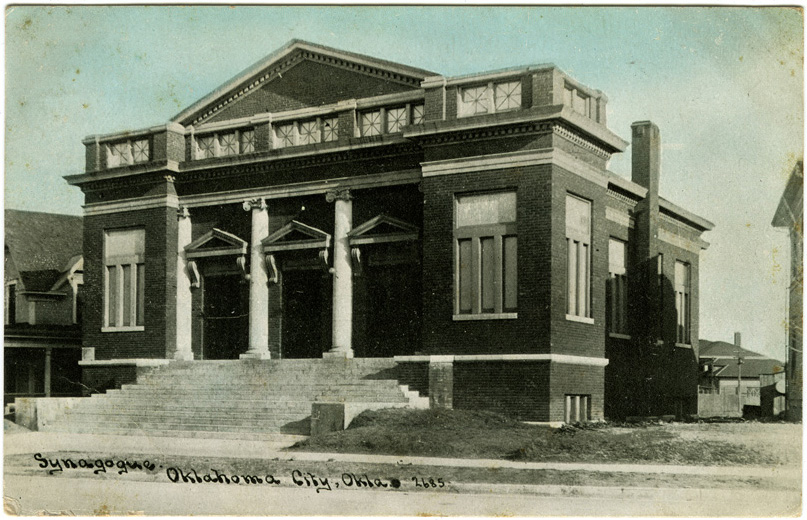6.11 Oklahoma City, Oklahoma
Temple B’nai Israel, 50 Broadway Circle
Williams and Wells, architects; J. A. Johnson, builder, 1908
C. U. William, Bloomington, Illinois, publisher; no date
Oklahoma City’s Temple B’nai Israel (Sons of Israel) congregation, founded in 1903, had been holding services at St. Luke’s Methodist Church when, in 1906, it purchased land for a synagogue at 50 Broadway Circle. In 1907, the year Oklahoma became the 46th state, the cornerstone for the building shown here was laid in a Masonic ceremony. B’nai Israel was dedicated on January 12, 1908, in a public celebration attended by Jews from across Oklahoma, where it was the first permanent Jewish house of worship.
The building was of a transitional design. It had short blocky towers flanking the facade—these would have housed staircases to the basement and perhaps to a gallery level. The stark geometry of these towers and the rest of the building’s massing looked forward to the popular Byzantine style that would dominate the 1920s. Here, however, the nod was still given to classicism. There was a front entrance flanked by columns, with architraves supported by classical brackets over each of three main doors. There are no known pictures of the interior, but it was probably of a subdued classical design.
By 1910, B’nai Israel had grown to include 60 members. Its Sisterhood was active as well. By 1925, membership had increased to more than 160 families, and the temple building was overcrowded. In 1926, ground was broken for an adjoining temple center to house the Sunday school, kitchen, temple office, a lounge, and an auditorium. By 1949, however, the congregation had outgrown its building. Julius and Erna Krouch donated ten acres of land for a new synagogue located in northwest Oklahoma City, reflecting—but also encouraging—the movement of Jewish families away from the city’s center. Architect Norman Berlowitz donated his services. In 1954, construction began on a new building, which was dedicated the following year. The new temple featured an outdoor swimming pool—the proverbial Shul with a Pool—to appeal to the many young Jewish families in the congregation.
